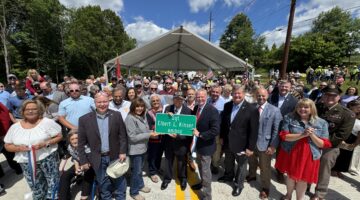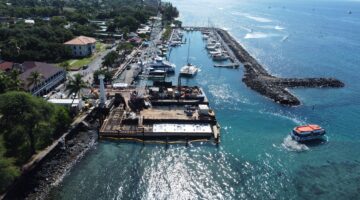It’s no secret that water and wastewater utilities face several complex challenges. There’s the perpetual aging infrastructure problem and growing concerns over a graying workforce. There’s the resilience challenge, whether flooding and extreme storms or drought and water scarcity. There’s the issue of emerging contaminants and “forever chemicals,” such as PFAS (per- and polyfluoroalkyl substances). The list goes on and on.
Overcoming the challenges involves planning for and ultimately building infrastructure – whether it’s rehabilitating existing assets, replacing assets that are past their useful life or expanding the system with new assets. And that costs money, which leads us to the challenge that underpins all the others – financial concerns.
There are means in place to help water and wastewater projects garner federal funding, but often the projects need to be “shovel-ready” or advanced to a state of ready-for-construction to capitalize on the availability of funding. It can be a situation of the funding going elsewhere, even to another community with a ready-to-go project, leaving others to wait through unknowns for next year. Or the next.
For utilities, it’s the lengthy, yet important and necessary planning and development process that can throw the proverbial wrench in the wheel and delay construction commencement. After all, construction projects are disruptive to the utility itself when you consider all the factors like infrastructure interconnectivity, shutdowns, startups, tie-ins, infrastructure locations, treatment processes, permits, raw water sources, discharge points, procurement models, political will, rate structures, public acceptance, and more.
It’s no wonder it can take years for projects to reach the starting line where state and federal funding awaits.
However, utilities can take some measures to accelerate projects and position themselves for some of the available federal dollars. That was the focus of a panel that I facilitated at a recent P3 conference. At this event, my fellow panelists and I discussed a few ways utilities can accelerate the process:
Teamwork makes the dream work. Perhaps it’s cliché, but it’s certainly applicable here. By focusing on identifying the need and the performance criteria, utilities can foster collaboration and expedite the process by bringing on board the right team (engineers, contractors, operators, lenders and investors) to develop the right solutions that meet stated goals. Matching talent to task can pay dividends and allow considerations such as procurement models, technical processes and project details to be developed by those who spend their days working in those tall weeds.
With an accurate understanding of the schedule, budget and technical constraints, utilities can then arrive at the best delivery model for a specific project, whether that is progressive design-build (PDB), construction manager at risk (CMAR) or even public-private partnership (P3), among others. The trusted delivery team can also advise on additional funding opportunities. The key is matching talent to task and fostering collaborative development. Like the idea of matching talent to task, working with advisors experienced with the chosen delivery model is important and can prove fruitful in the long run. You want the most experienced and qualified delivery team to design, build and operate your project, and likewise you should want the most experienced and qualified advisory team to help provide the right guidance and recommendations.
Regional collaboration. In the United States, there are far more smaller water utilities than major ones, like those serving metropolises such as New York, Los Angeles, Chicago, Miami or Houston, just to name a few. Smaller utilities face many of the same – if not more – challenges as their megacity counterparts. Neighboring communities to that smaller water utility might be facing similar issues, too. Working together, regionally, with other local utilities to understand common problems and needs can be huge for making headway on inclusive solutions. It could even lead to a bundled, larger project that saves each utility money over the near or longer term and draws more interest from the companies best equipped to deliver those types of projects.
The regional approach may lend itself more to collaborative delivery models like PDB, CMAR or P3s.
Drive public acceptance. Utilities have done a good job of keeping their infrastructure out-of-sight, out-of-mind and keeping things simple for their customers. Perhaps too good. Starting early on more proactively educating the community can spur public acceptance for new infrastructure projects. Rates would likely need to rise to fund new infrastructure. But educating customers on the value of clean water and safe treatment of wastewater to the community, and the real value of the infrastructure that handles all that water and wastewater, can go a long way toward building an understanding in the community that safe, clean and environmentally conscious water “doesn’t just happen.”
Unfortunately, this is a more formative, longer-term process. However, beginning a focus on community engagement now will have far-reaching, positive effects in the long run.
While there are additional ways beyond those named here to accelerate development of projects to grab a share of federal funding, the key to remember is collaboration.
Final outcomes are successful when parts of a team focus on their role and the contribution they make to the whole.
About the Author
Henry Patel is a Vice President at Kiewit focused on infrastructure projects across North America. With 22 years of experience, he has worked with both the public and private sector to help them understand and analyze key commercial and financial drivers, from the initial stages of project feasibility through financial close, during construction and thereafter during operations.


